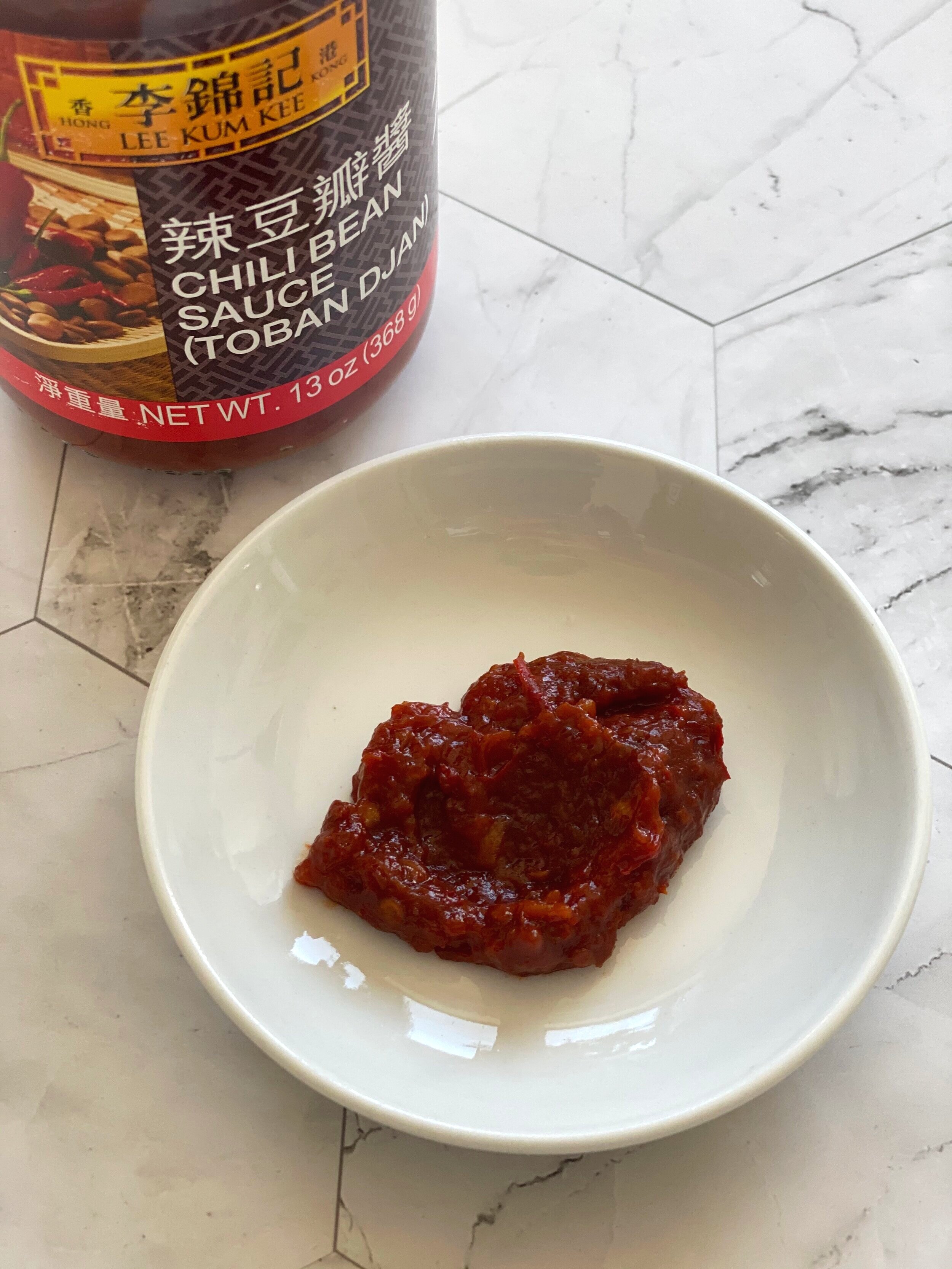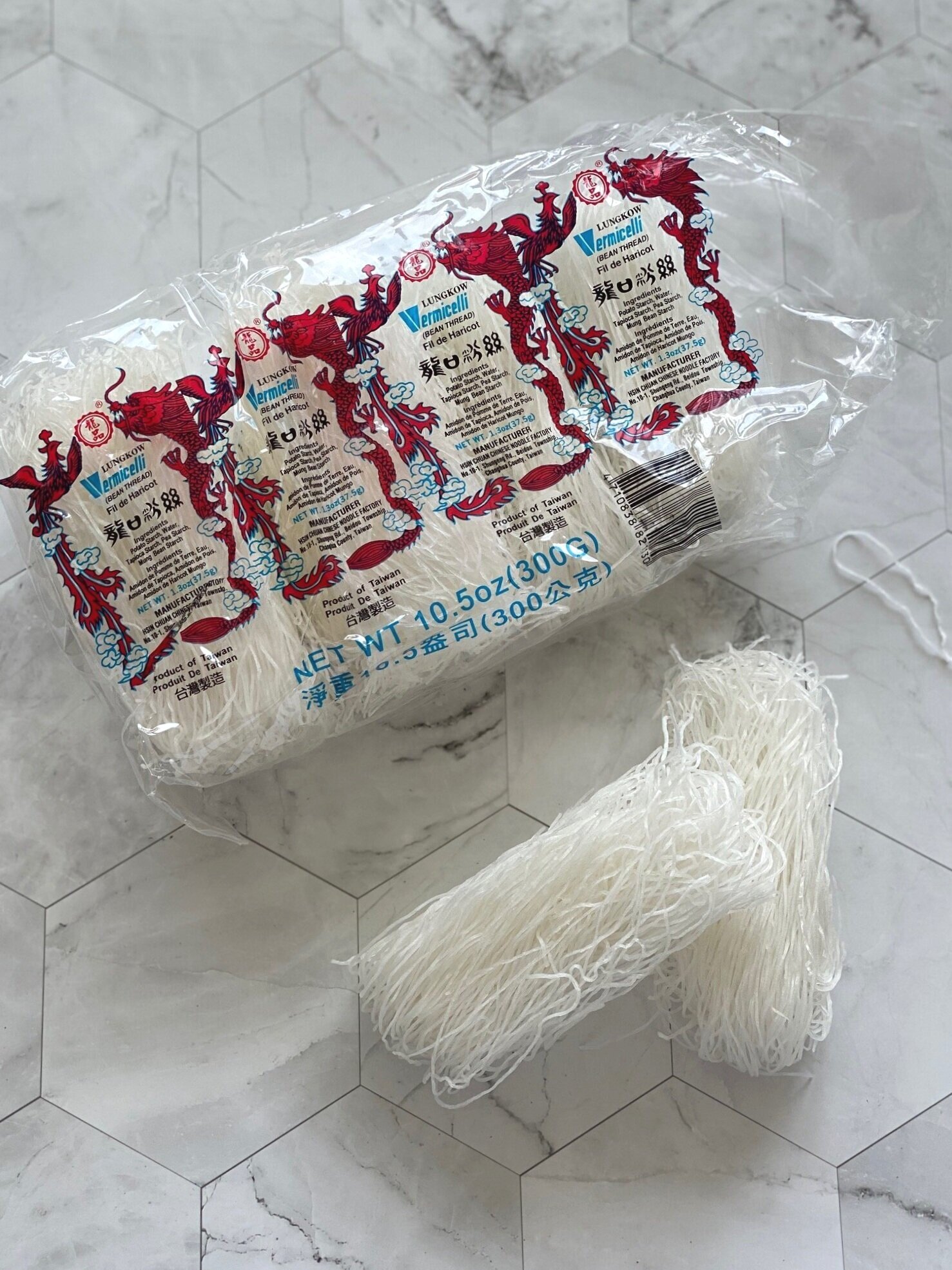ants climbing a tree
Ants Climbing a Tree, 蚂蚁上树 (Ma Yi Shang Shu) is spicy stir-fry of glass noodles tossed with crispy fatty ground pork nuggets. My friend Serena Kuo shared her love for this recipe and why it has such a whimsical name. “The way the crispy ground pork just holds onto the strands of saucy glass noodles makes it quite memorable. Even though in traditional restaurants, they would list it as a stir-fry glass noodle with spicy ground pork on their menus”, Serena explained. She grew up enjoying this as a side dish because of the heat would make her eat more rice which was more filling. Definitely a way to stretch the dollar for a working family. Give this recipe a try and be sure to listen to our conversation about Asian Americans in 2020.
ants climbing a tree
Prep time: 30 minutes | Total time: 30 minutes
Serves: 4
Ingredients:
8 ounces cellophane noodles, also known as bean thread noodles*
2 teaspoons cornstarch
2 tablespoons vegetable or canola oil
1 1-inch piece of ginger, finely grated
2 cloves of garlic, minced
3 scallions, thinly sliced, greens and white separated
1/2 to 1 teaspoon crushed red pepper flakes
3/4 pound fatty ground pork
1/4 cup chili bean paste, toban djan or doubangjiang**
1 tablespoon chicken bouillon
1 tablespoon dark soy sauce***
1 teaspoon sugar
Kosher salt
Steamed white rice, for serving
Instructions:
In a large bowl, soak the cellophane noodles in room temperature water for 10 minutes. When the noodles are rehydrated, the color will change from white to translucent. Rinse under cold water and drain in a colander. Shaking off any excess water. Set aside.
In a small bowl, add the cornstarch with 2 teaspoons of water. Stir until well combined and set aside.
Heat the vegetable oil in a wok or large non-stick skillet over medium-high heat. Add the ginger, garlic, scallion whites and the crushed red pepper flakes. Let aromatics fry slightly until ginger is golden brown, about 1 minute. Add the chili bean paste and stir until combined.
Turn heat to high and add the ground pork. Breaking it apart with a wooden spoon. Cook until meat is broken up and a cook through, about 3 minutes.
Sprinkle in the chicken bouillon along with 1 1/2 cups of water, dark soy sauce and sugar. Bring to a boil. Give the cornstarch mixture a final stir and add to the boiling sauce. Allow it to simmer until slightly thicken, about 1 minute. Taste and season with salt, if desired.
Add the prepared cellophane noddles and toss until well combined. If the noodles soak up too much of the sauce, feel free to add up to 1/2 cup of water. Transfer to a platter and sprinkle with scallion greens. Serve with steamed rice.
Cook’s Note
*Rice noodles and Cellophane noodles aka bean thread/ glass noodles (Pictured above)
Rice noodles 米粉 are made from rice and are thin, long, white sticks. When cooked, they become opaque.
Cellophane noodles aka bean thread / glass noodles 粉絲 are made from mung beans starch. When rehydrated, they become translucent. Koreans also have a version of glass noodles made from sweet potato starch which are slightly thicker, it’s called dangmyeon.
The texture between the two are very different. Rice noodles are starchy yet not sticky versus cellophane noodles which are chewier and more gelatinous.
My favorite brand of cellophane noodles is from Lungkow.
**What is chili bean paste?
Chili bean paste 豆瓣醬 has many names due to pronunciation, Toban Djan or Doubanjiang. Traditionally it is a fermented broad bean paste made with salt, rice, spices and it may or may not contain chili flakes. It adds such depth to stews because of the complex flavors and umami. My favorite is from Lee Kum Kee Toban Djan.
***Difference between soy sauce.
There are so many difference kinds of soy sauce. Depending on the purpose, it will vary between color, viscosity and taste. The lighter the soy, the more delicate in flavor it is. Light soy sauces are usually for dipping or finishing a dish. Dark soy sauces are for braising or stews. They will add color to the dish and it is often times saltier. My favorite brand of dark soy sauce is from Amoy Gold Label Dark Soy.





